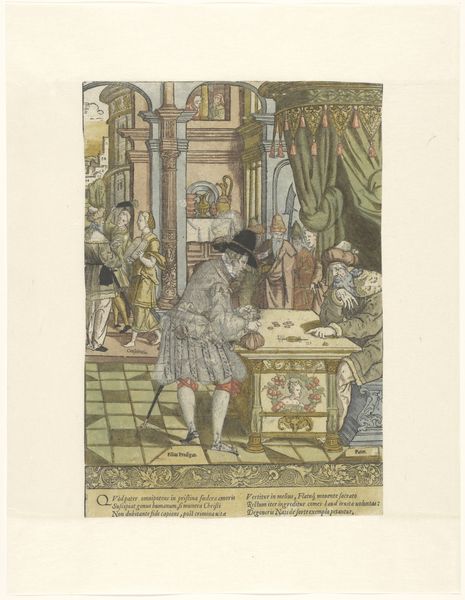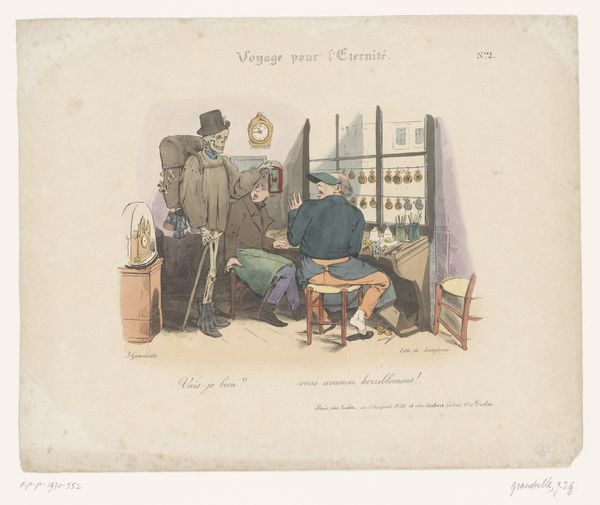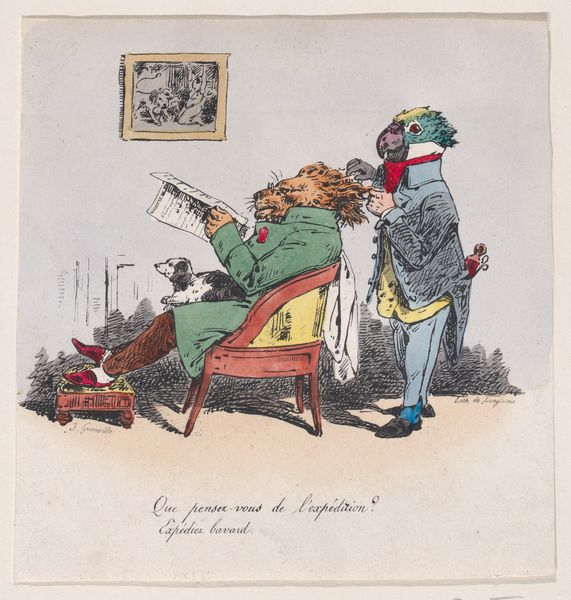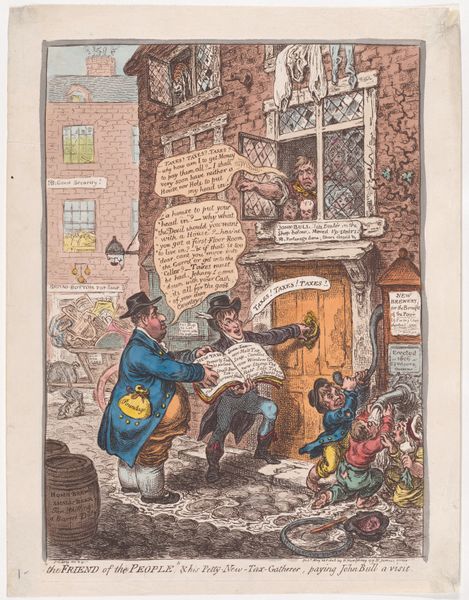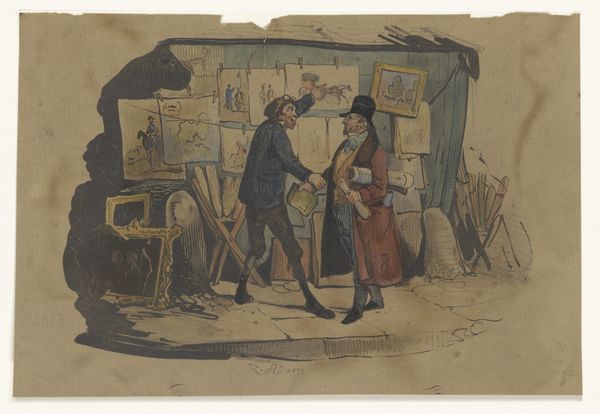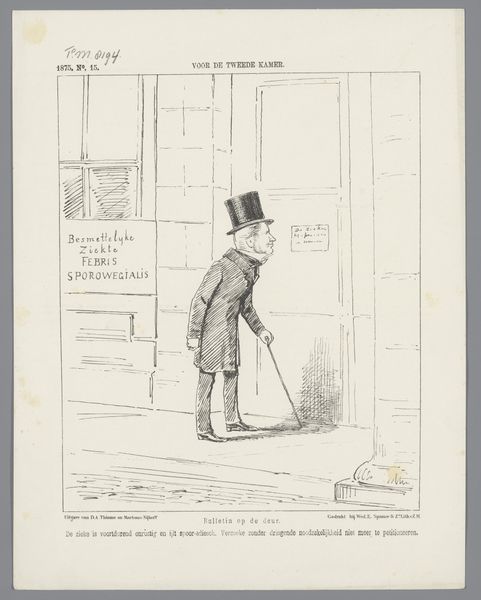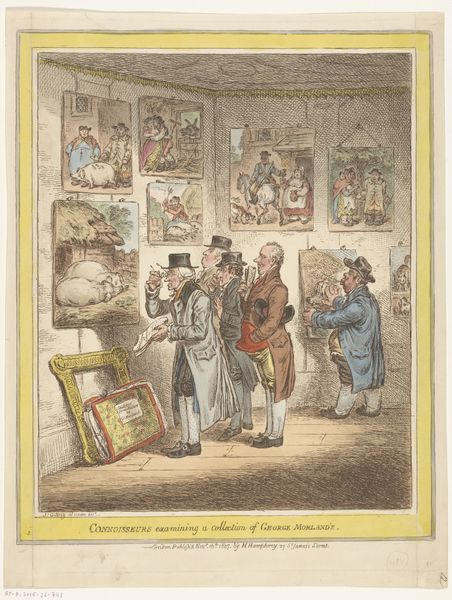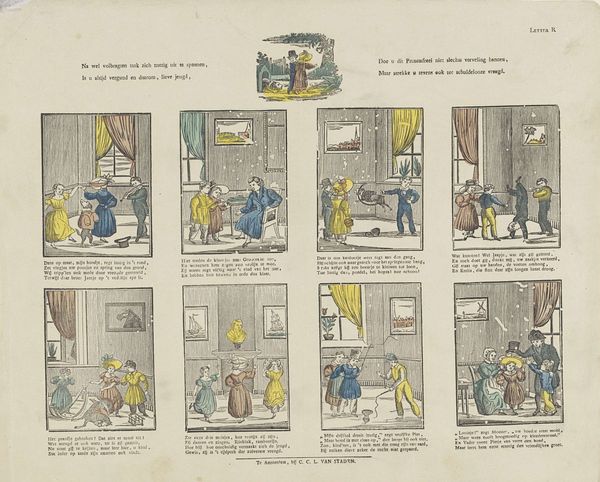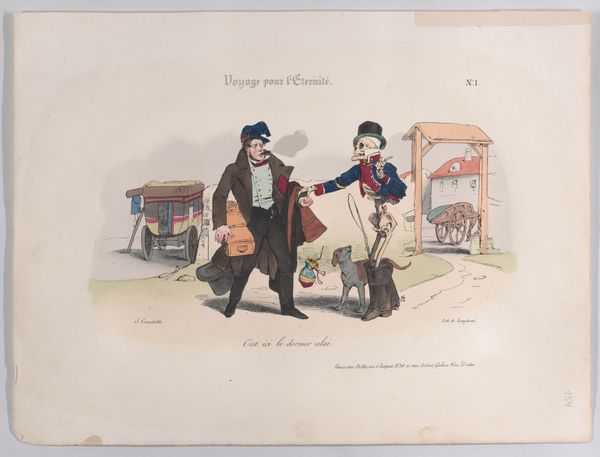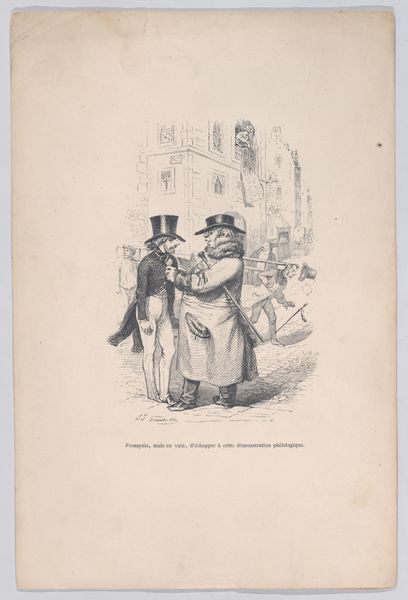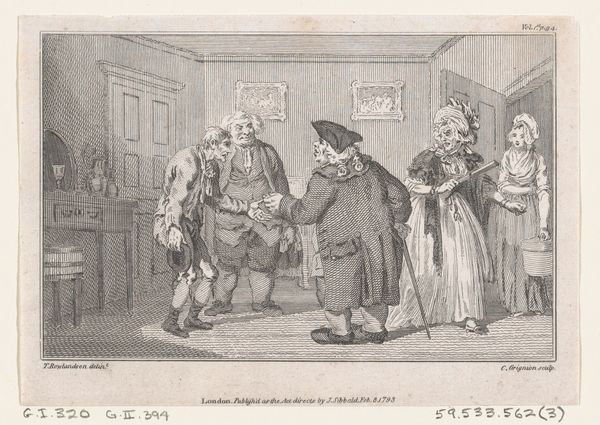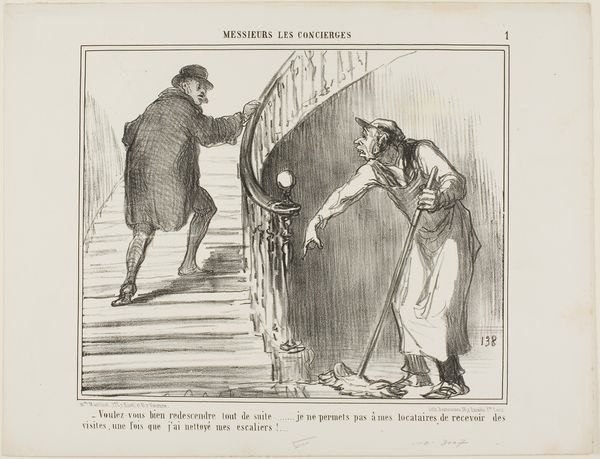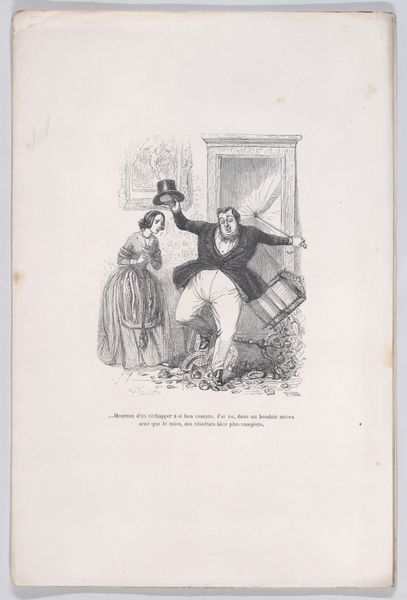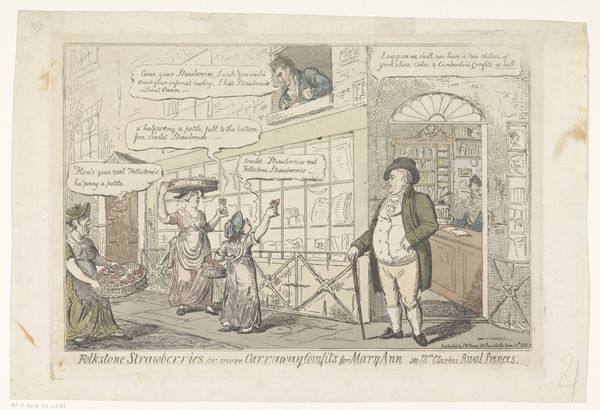
Dimensions: height 275 mm, width 350 mm
Copyright: Rijks Museum: Open Domain
Curator: This lithograph, titled "Leden van het Assemblée nationale op vakantie," translates to "Members of the National Assembly on Vacation." It's thought to have been made sometime between 1860 and 1880 by a Monogrammist AN. Editor: It strikes me as rather biting, that is to say with a slightly cynical humour. I noticed it especially in the exaggeration of their forms: stout bodies squeezed into tailored suits with top hats in rigid poses. Curator: Absolutely, it's a caricature, a commentary on the genre of history painting! This lithograph utilises accessible printmaking to disseminate political commentary, rather than reserving depictions of governance for monumental paintings. Look at the two panels side by side – the first man dramatically abandons a "pave" representing "le pays," or "the country," after killing someone with an economic plan. Editor: And the second panel? Is it illustrating this return home through the depiction of these men as somewhat foppish and oblivious in their comfort? Note also how one depiction suggests an abandoning of the country and in contrast the other, of the comforts of the house and of the "wife" as translated in the lower script. Curator: I'd say so. The material suggests that we also view this piece as disposable political critique rather than an enduring document, while on the right panel notice how he is seemingly occupied with sartorial concerns rather than pressing state matters. These were meant for mass distribution and immediate impact. The details also give hints about that societal perception, such as the hats of the deputies. Editor: The juxtaposition is incredibly effective, especially considering Romanticism often dealt with idealised representations. But by placing two separate scenarios together and utilizing caricature, the Monogrammist cleverly scrutinizes the assembly and its relationship to labour in service to the country. Curator: I agree. It showcases how art can engage directly with the political landscape, turning potentially revolutionary commentary into a commercially viable product that can disseminate more opinions through material reality. Editor: Ultimately, a small but sharp observation of its era. Curator: Exactly, a perfect example of the period’s artistic social critique of the governance by Monogrammist AN.
Comments
No comments
Be the first to comment and join the conversation on the ultimate creative platform.
